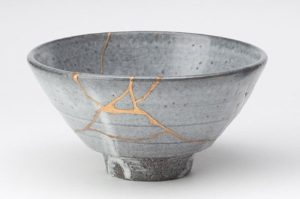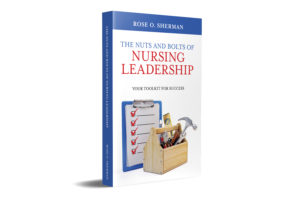By Rose O. Sherman, EdD, RN, NEA-BC, FAAN
Last week, a widely carried story on CNN highlighted seasoned nurses who have been so traumatized by the COVID experience that they quit (at least temporarily) the nursing profession. It was shocking to the public but less so to nurse leaders.
Nurse leaders that I have talked with are concerned about their staff’s trauma but not always sure how to respond (beyond the referrals to EAP programs).
Given the widespread impact of the COVID crisis on the nursing workforce, an important strategy moving forward will be to adopt a trauma-informed approach in our leadership. Dave Tweedy defines trauma-informed leadership as an appreciation for the emotional world of personal and professional experiences that rumble beneath the surface. It helps to explain the anger, negativity, and outsized emotional reactions to situations that we see today in our nursing environments.
Trauma-informed leadership recognizes and honors the emotional scars that people have. It can help the leader empathize with their employees, both powerful emotions themselves for a leader to have.
SAMHSA (the US Substance Abuse and Mental Health Services Administration) defines a trauma-informed approach as developing interventions explicitly designed to address the consequences of trauma and facilitate healing. There are four components of this approach:
- The leader Realizes the widespread impact of trauma and understands potential paths for recovery.
- The leader Recognizes the signs and symptoms of trauma in clients, families, staff, and others involved with the system.
- The leader Responds by fully integrating knowledge about trauma into policies, procedures, and practices.
- The leader Seeks to help staff actively resist re-traumatization.”
At different points on our leadership journey, we have to develop new competencies and skills. Moving forward to help the nursing workforce heal, understanding more about trauma and PTSD is vital for nurse leaders. For a significant number of the nursing workforce, COVID-19 has been a traumatic event.
Tedeschi and Moore, in their essential work, Transformed by trauma: Stories of post-traumatic growth, remind us that it’s not so much the event itself that defines trauma but rather how it changes your core beliefs. Core beliefs are ways of thinking about how we are and how others are supposed to be – and ideas about how the world should work and what our lives are supposed to look like. They also advise us that PTSD is not an inevitable trauma outcome (less than 10% of trauma victims have it).
It is crucial to identify nurses who are at risk or already have PTSD. Trauma experts, Goulston and Hendel, define PTSD as an acute distress disorder lasting more than one month characterized by the following:
- Intrusive thoughts such as nightmares, flashbacks, emotional distress.
- Avoidance habits such as a decision to leave the profession, a desire to move from ICU.
- Negative thoughts such as feeling they did not do enough.
- Hyperarousal such as panic attacks, not feeling psychologically safe.
Staff suffering from PTSD need professional help. Recovery for them will take structured interventions that are not in the skill set of most nurse leaders. But nurse leaders can and should use trauma-informed leadership to help the remainder of the workforce grow from this trauma and emerge more resilient. It begins with encouraging nurses to talk with one another about their experiences, explicitly looking at the following key areas:
- What is our authentic story about what happened here during COVID?
- What core beliefs have changed for us?
- What losses have we experienced?
- How are we grieving through our losses?
- What did we learn about ourselves through this experience?
- What are our new priorities?
- Where do we go from here?
- How can we help others through this experience?
- How can we use what we have learned to help future nurses?
- What policies/practices should we implement to prevent things that we want to make sure never happen again?
I have advised leaders to use the Japanese art of Kintsugi (sometimes called resurrection art as illustrated in the picture above) as a metaphor to think about this experience. Don’t hide the cracks of what happened here to nurses; they are part of who we are as a profession moving forward.
So how do leaders learn more? I would begin with reading the SAMHSA_Trauma guide which explains how to use a trauma-informed approach. I would also recommend the two books that I have listed below as references to learn more about trauma and PTSD.
References
Goudel, M. & Hendel, D. (2020). Why cope when you can heal. Harper Horizon.
SAMSHA (2014) SAMHSA’s Concept of Trauma and Guidance for a Trauma-Informed Approach.
Tedeschi RB, Moore BA. Transformed by Trauma: Stories of Post-Traumatic Growth. Boulder Crest; 2020.
Tweedy, D. (nd). Trauma-informed leadership: An approach for healthcare. Trauma Informed Leadership: An Approach for Healthcare | USC Online
© emergingrnleader.com 2021
Launch 2021 by giving your leadership team the gift of a highly rated webinar – Nursing Leadership in 2021: Rebooting after a Life-Quake A Nursing Leadership Reboot Workshop
Read the Nurse Leader Coach – Available at Amazon and Other Book Sellers.
Coming Soon a New Book to Strengthen Your Leadership in 2021 – The Nuts and Bolts of Nursing Leadership: Your Toolkit for Success – Available for Pre-Order




 LinkedIn
LinkedIn Instagram
Instagram